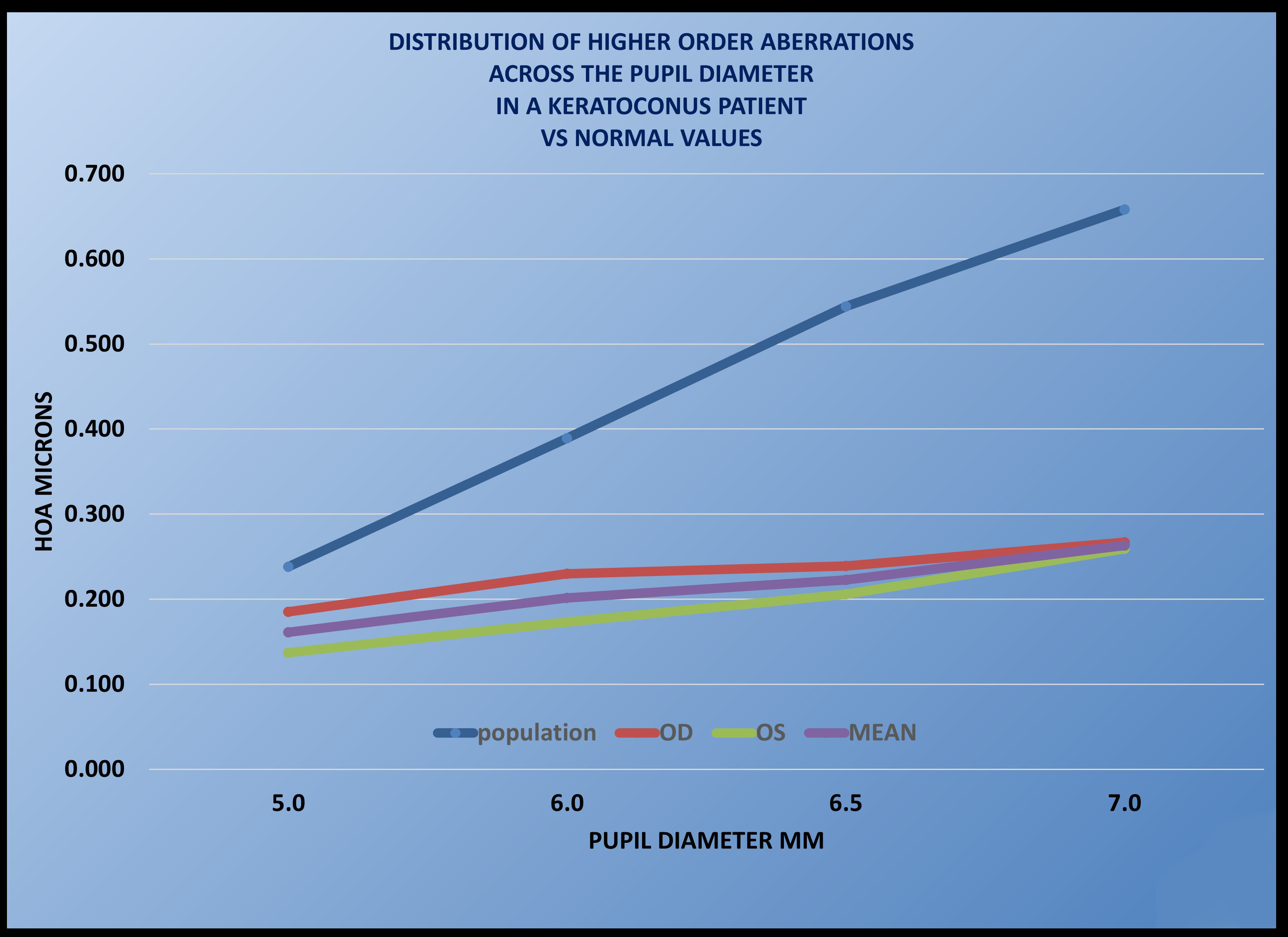In 2016 we helped our first patient with keratoconus pass his physical to be a commercial pilot. Two years later, he would send us a picture from the cockpit of his airplane. About one year later, as fate would have it, another young man who has keratoconus contacted us. Once again, with the help of LASERFIT, he earned his own wings to achieve his dream of becoming a pilot. We are now privileged to have worked with a number of young people who refused to allow keratoconus hold them back from their dream job.
Recently we were happy to see our young pilot return after a couple of years. As before, all he needed was a vision “tune up.” After his first fitting visit, we were able to correct his vision to 20/20 in both eyes. After his second visit a few years later, we were able to help him achieve 20/15 in both eyes. This time around, we had some extra time and so I decided to see if 20/10 vision might be in the cards by using one of my other algorithms. Indeed he was able to see most of the 20/10 line with his “better” eye, and about half of the 20/10 letters with his other eye.
The process of correcting higher order aberrations is heavy on science, but as with most complex systems, there is also a bit of “art.” For this patient I decided to dilate his pupils during each of the days he was here, and I noticed something interesting. There is a certain relationship between the level of higher order aberrations and the diameter of the pupil. In other words, the pupil is a natural modulator of optical distortion. Most of our LASIK patients have found out the hard way how much worse their symptoms are under low light. In fact, in normal individuals, the mean total HORMS is almost twice as high for a 7 mm pupil than a 6 mm pupil. Many of the LASIK patients I have treated over the years will often exhibit 3 – 4 times greater HORMS than a normal person, and the same also goes for keratoconus patients.
I am always struck by how much better than “normal” our patients achieve for the larger pupil diameters. There are a dearth of studies reporting normal (pre-operative) HOA values for pupils larger than 6.0 mm. Many patients may have close to normal values up to 6.0 mm diameter, but then experience exponentially higher values for HOA when the diameter goes past 6.0 mm. And yet some studies don’t report results for pupils larger than 5.0 mm.
In the graphic below, the total HORMS are shown for both eyes separately, the average, and then compared to the values for “normals” as reported in a study that was published in 2007 (High-order aberrations and preoperative associated factors, Luis E. Fernández de Castro, Helga P. Sandoval, Luanna R. Bartholomew, David T. Vroman, Kerry D. Solomon). What is interesting is how flat the higher order aberrations are across the entire pupil range, and especially for a such a large 7.0 mm pupil. We achieve similar results with most of our patients in terms of significant reductions in HORMS for all pupil sizes. Moreover, we had time to try different approaches and still finished ahead of schedule!



